'Sex and the City' exhibition by Michael Soi, Thom Ogonga and John Kamicha accused of 'blasphemy
Published April 14, 2014 in This is Africa
I wrote this story in 2014 prior to my setting up this archive-blog. Guess what? I found it via google at a website assembled by some guy named 'Neo-Griot'. And guess what! he republished my whole story, including my photos giving me NO CREDIT, not a mention of wa Gacheru who wrote the story and took all the photos. I should be grateful to him for stealing my story since i might have lost it and see how interesting it is. .
“Sex and the City”
accused of blasphemy
Kenyan artists are not afraid to ruffle feathers, but even they were surprised by the ferocity of the reactions generated by the paintings they exhibited in a show “Sex and the City”, with accusations of blasphemy and demands that the paintings be removed.
Kenyan artists Michael Soi, Thom Ogonga and John Kamicha enjoy creating provocative art that unsettles the status quo. They also don’t shy away from producing paintings that challenge the public to think deeply about the social issues behind their imagery. Which of course means not everyone likes what they produce, and that includes the paintings on display at Alliance Francaise Nairobi since the 3rd April in a show titled “Sex and the City”.
Some of those who saw the exhibition found it distasteful and disturbing. That sort of reaction doesn’t fluster the artists one bit. In fact, they quite like being attacked in the public sphere for violating the conventional sense of propriety. They know their fans outnumber the moral critics, including those that tried to have Sex and the City shut down. Soi, Ogonga and Kamicha don’t mind when they are told their art is ‘in bad taste’, especially since Ogonga and Soi began doing ‘research’ in the bars and back streets of Nairobi, exploring what goes on after dark when people who are out at that hour believe ‘nobody’s looking’. It’s those indiscreet moments that Soi and Ogonga enjoy employing in their art.
What goes on when expatriates end up at bars where African women are agile pole dancers
Painting without sensationalism, all three artists in the show have a flair for exposing sides of their city few people know much about and those who are familiar with these nocturnal activities prefer to keep quiet about the part they play in those aspects of Nairobi night life, for obvious reasons.
Many of us appreciate the freshness and honesty of their paintings, especially as their art can be seen as chronicling current social realities. That includes phenomena like what goes on when expatriates end up at bars where African women are agile pole dancers.
For instance, a painting like Soi’s See no Evil portrays several themes that the artist is currently examining artistically, such as the voyeuristic nature of Nairobi club life and interracial relations both between white or Asian men and African women and between white women and young African men.
One such African man in Soi’s work actually has a name. It’s Omari and he has become a recurring subject in a number of Soi’s most recent paintings. His exploits with women (both white and black) as portrayed by Soi reveal the sort of storytelling style that the artist has become notable for.
Ogonga also tells stories with his nightlife paintings, although his images seem more innocuous at first glance and he paints his subjects to look quite beautiful. Until you realise the women in particular might be that attractively dressed because of the sort of nightly business that they’re in, which involves attracting well-to-do men, be they white, black or brown.
But for all the controversy that may have raged around Sex and the City, none has been as ferocious or censorial as that generated by the art of Kamicha.
The vociferous charge that the artist was ‘blasphemous’ derived from one specific painting by which fundamentalist Christians were deeply offended.
Having seen Kamicha’s collage titled Sex Retreat on Facebook the night before the show opened, a squad of Christian censors virtually stormed Alliance Francaise demanding that the painting be removed. What they couldn’t stand was a suggestive image they believed to be Jesus Christ surrounded by semi-nude women and other images they felt were anti-Christ-like.
Fortunately, the artist was on hand when AF cultural coordinator Harsita Waters was being confronted by the moralists who were insisting the collage be removed.
The artist who hadn’t expected such a violent reaction was willing to comply, but many people have complained ever since that the fundamentalists were violating not only the artist’s right to express himself freely but also the public’s right to see what Kamicha had to say.
“No artist has ever seen Christ”
In an interview with this writer a few moments before the opening, the artist explained he was reacting to a story in the local media about so-called Christian pastors who take their flock on ‘sex retreats’. He was appalled by the hypocrisy and deceit of supposedly holy men; but he stressed that the image at the centre of his collage was not Jesus Christ. “No artist has ever seen Christ. The images we see and maybe believe look like Jesus are only interpretations. My intention was not to blaspheme Christ but to illustrate my disgust with deceitful priests who exploit their members, especially women.”
Using art to make a satirical social statement is something all three artists do, and something the public surely deserves to see, especially as it allows many to appreciate how relevant art can be to their everyday lives.
>via: http://thisisafrica.me/lifestyle/sex-city-accused-blasp
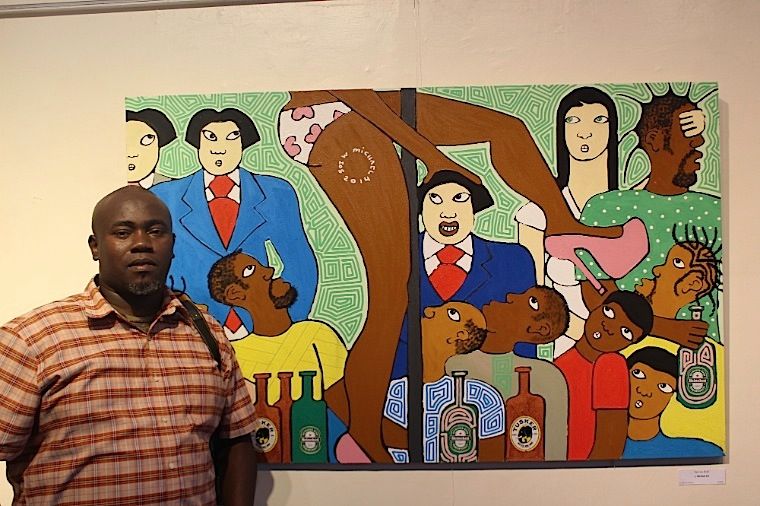
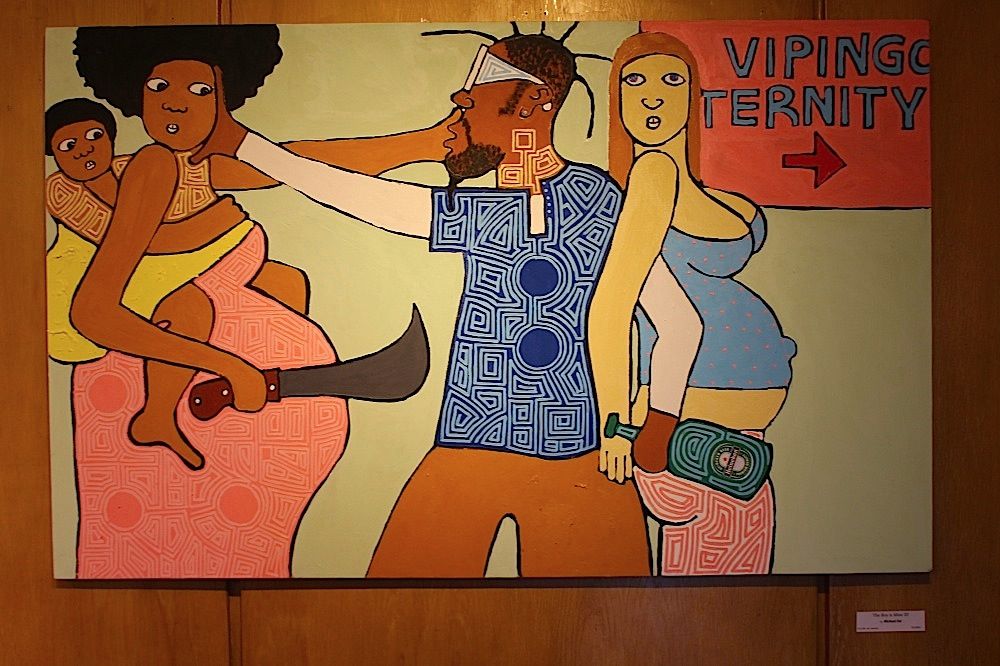
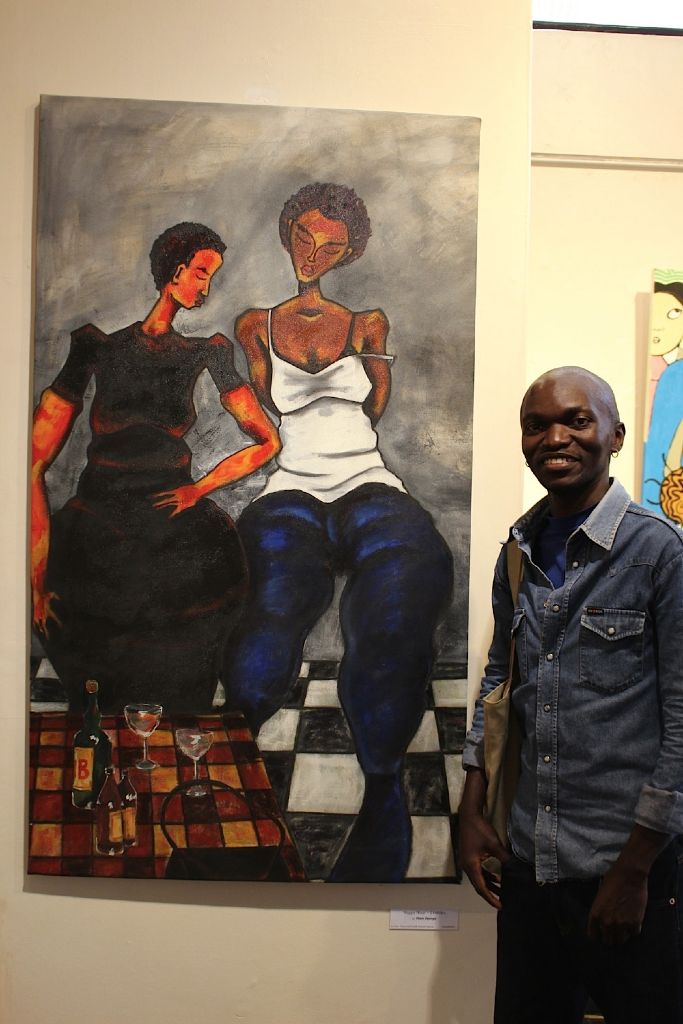
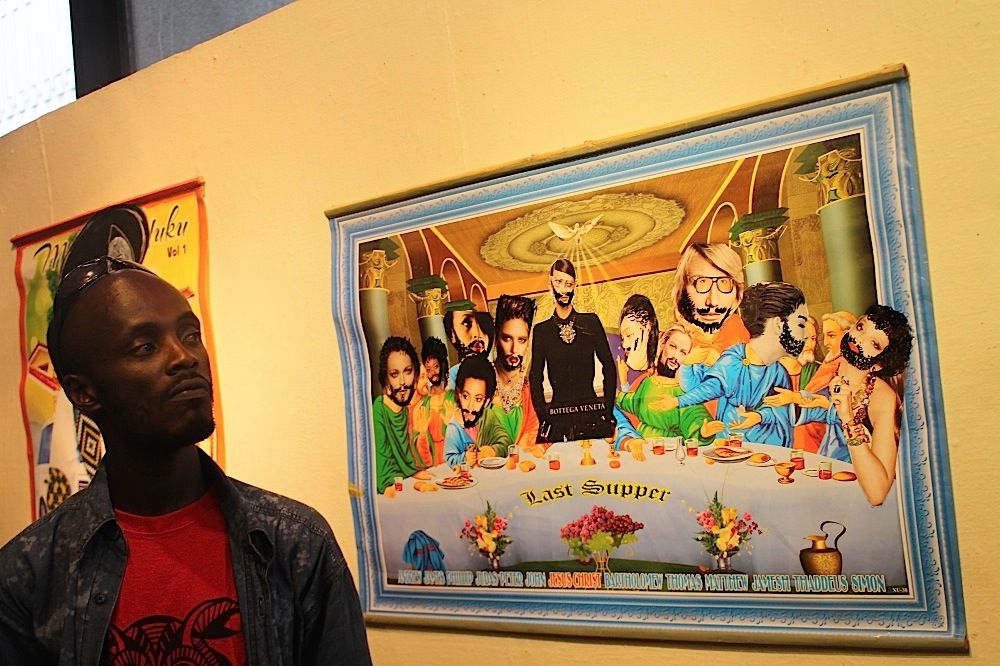

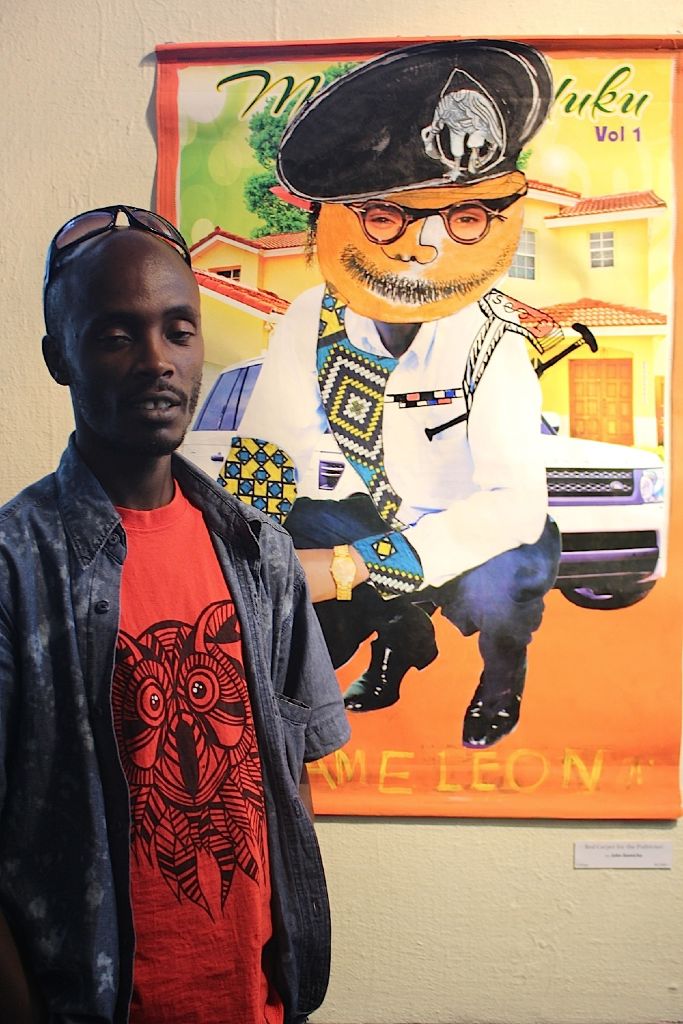
No comments:
Post a Comment